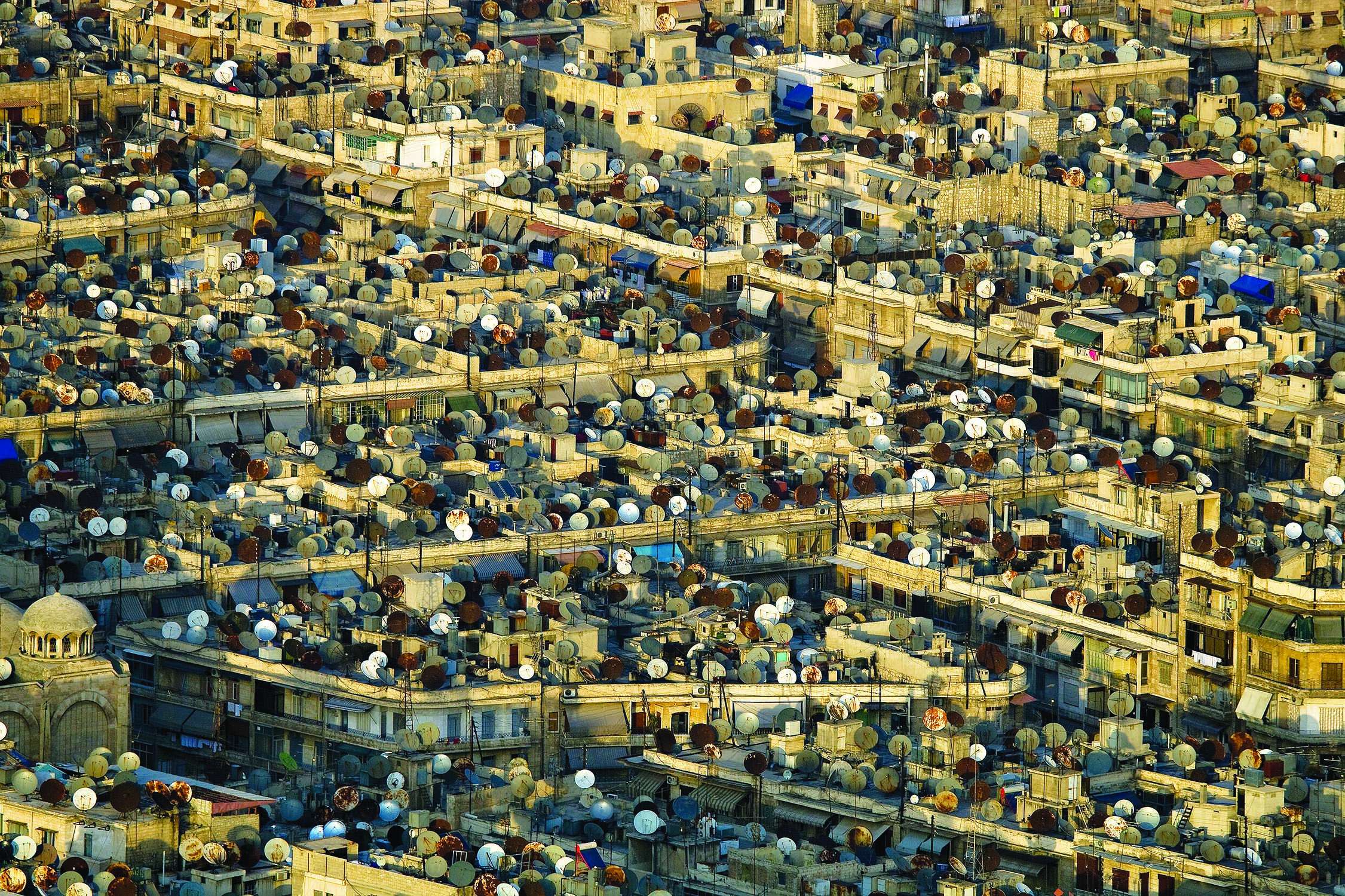The Coffee Table Book of Doom!
Do more people mean more trouble for the planet?

Just in time for the 45th anniversary of Earth Day, populationspeakout.org got into the business of reviving good old-fashioned doomsaying. The organization issued a large-format 316-page coffee table book, Overdevelopment Overpopulation Overshoot, filled with spectacular photographs intended to alarm people about the problems created by growing human numbers. In fact, if you agree to scare your friends and neighbors the group will send you a copy as a free premium to display on your coffee table.
The book, edited by Tom Butler of the Foundation for Deep Ecology, opens with a photo of giant Easter Island moai statues depicting "a civilization that overshot the land's carrying capacity." This is not an auspicious beginning. The parable of Easter Island ecocide—in which a small territory is overwhelmed by furiously multiplying humans—has been thrown into question by recent research demonstrating that it was European disease and enslavement, not population-driven warfare, that spurred that society's demographic collapse.
To alarm readers about overdevelopment and overpopulation, Butler chooses a Google Earth aerial photograph of the New Delhi city grid to make the point that human beings are now "urban animals." The caption notes that the city has an average population density of 30,000 per square mile. Sounds bad, right? Not when you consider that the population density of Brooklyn averages 35,000 people per square mile. Manhattan's population density today is 70,000 people per square mile, down from 87,000 per square mile in 1910.
Butler is right that humanity is urbanizing. The United Nations estimates that 54 percent of the world's people now live in cities and that the percentage will increase to around 80 by 2050. But this is good news, not bad. Urban dwellers have greater access to education, medicine, and market opportunities, and they have fewer kids. Meanwhile, reducing the number of people tearing up the landscape as hardscrabble subsistence farmers ultimately means that more land can be set aside for nature.
In fact, recent research by Jesse Ausubel and his colleagues at the Program for the Human Environment at The Rockefeller University finds that humanity may have reached peak farmland. Agricultural productivity per acre is improving faster than the demand for food; as a result, fewer acres are needed to grow crops. These trends suggest that as much as 400 million hectares could be restored to nature by 2060, an area nearly double the size of the United States east of the Mississippi River.
The photo essay "Trashing the Planet" is filled with graphic displays of the heedlessness with which people dispose of their garbage. All of the photos except one showing a tire dump in the United States are from poor developing countries.
Butler and his colleagues fail to acknowledge that trash disposal has been largely tamed in rich countries. A 1991 report for Resources for the Future once calculated that if the current rate of waste generation is maintained, all of America's garbage for the next 1,000 years would fit into a landfill measuring 120 feet deep and encompassing 44 square miles, about one-thousandth of 1 percent of the surface area of the United States.
In the section titled "Darkening Skies," the editor selects a photograph of burning oil refineries in Iran. Why were they burning? Because they had been bombed by Iraqis during the Iran-Iraq War. Somehow that doesn't seem like a pertinent illustration of overpopulation or overdevelopment.
Yet in rich countries, skies are actually lightening. The Environmental Protection Agency reports that since 1980, emissions of carbon monoxide, nitrogen oxides, volatile organic compounds, particulates, and sulfur dioxide are down by 67, 52, 53, 50, and 81 percent respectively. The best evidence finds that increasing wealth from economic growth correlates with a cleaner natural environment. That is to say, richer becomes cleaner.
On the back of the book, physicist Albert Bartlett starkly asks: "Can you think of any problem in any area of human endeavor on any scale, from microscopic to global, whose long-term solution is in any demonstrable way aided, assisted, or advanced by further increases in population, locally, nationally, or globally?" The folks at populationspeakout.org apparently think this is a devastating observation. But is it?
In his insightful 2013 book The Infinite Resource, the technologist Ramez Naam counters such thoughts with another question: "Would your life be better off if only half as many people had lived before you?" In this thought experiment, you don't get to pick which people are never born. Perhaps there would have been no Newton, Edison, or Pasteur, no Socrates, Shakespeare, or Jefferson. "Each additional idea is a gift to the future," Naam notes. "Each additional idea producer is a source of wealth for future generations." Fewer people means fewer new ideas about how to improve humanity's lot and how to further decouple our endeavors from the natural world. "If we fix our economic system and invest in the human capital of the poor," writes Naam, "then we should welcome every new person born as a source of betterment for our world and all of us on it."
This article originally appeared in print under the headline "The Coffee Table Book of Doom!."


Show Comments (1)